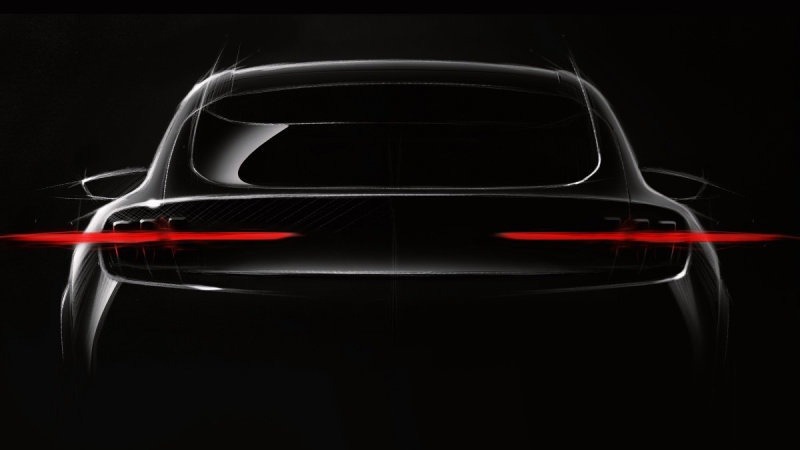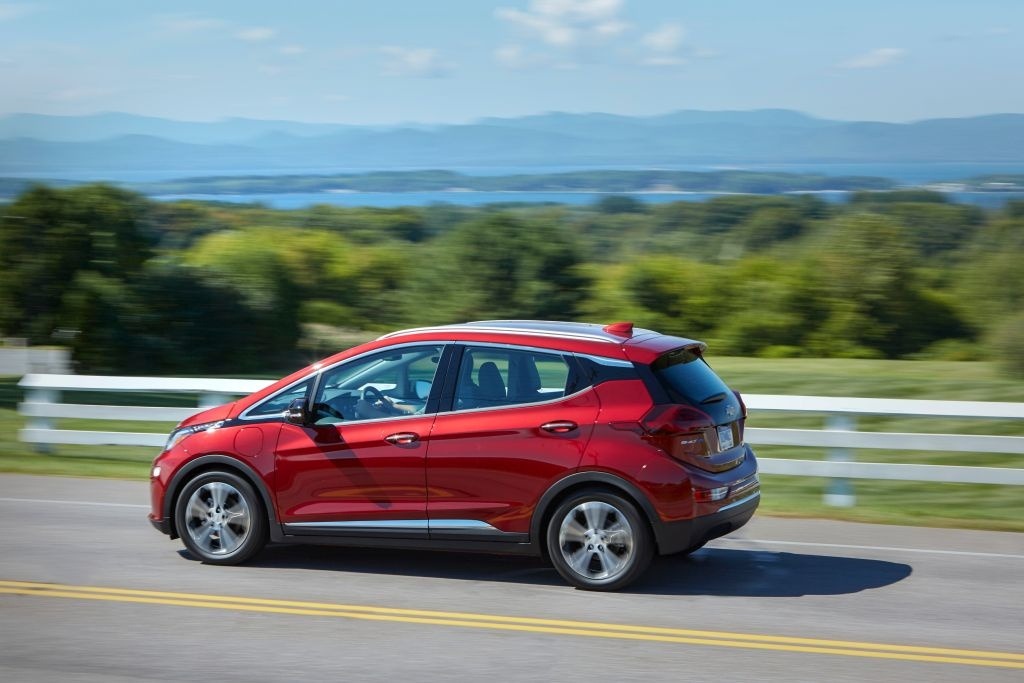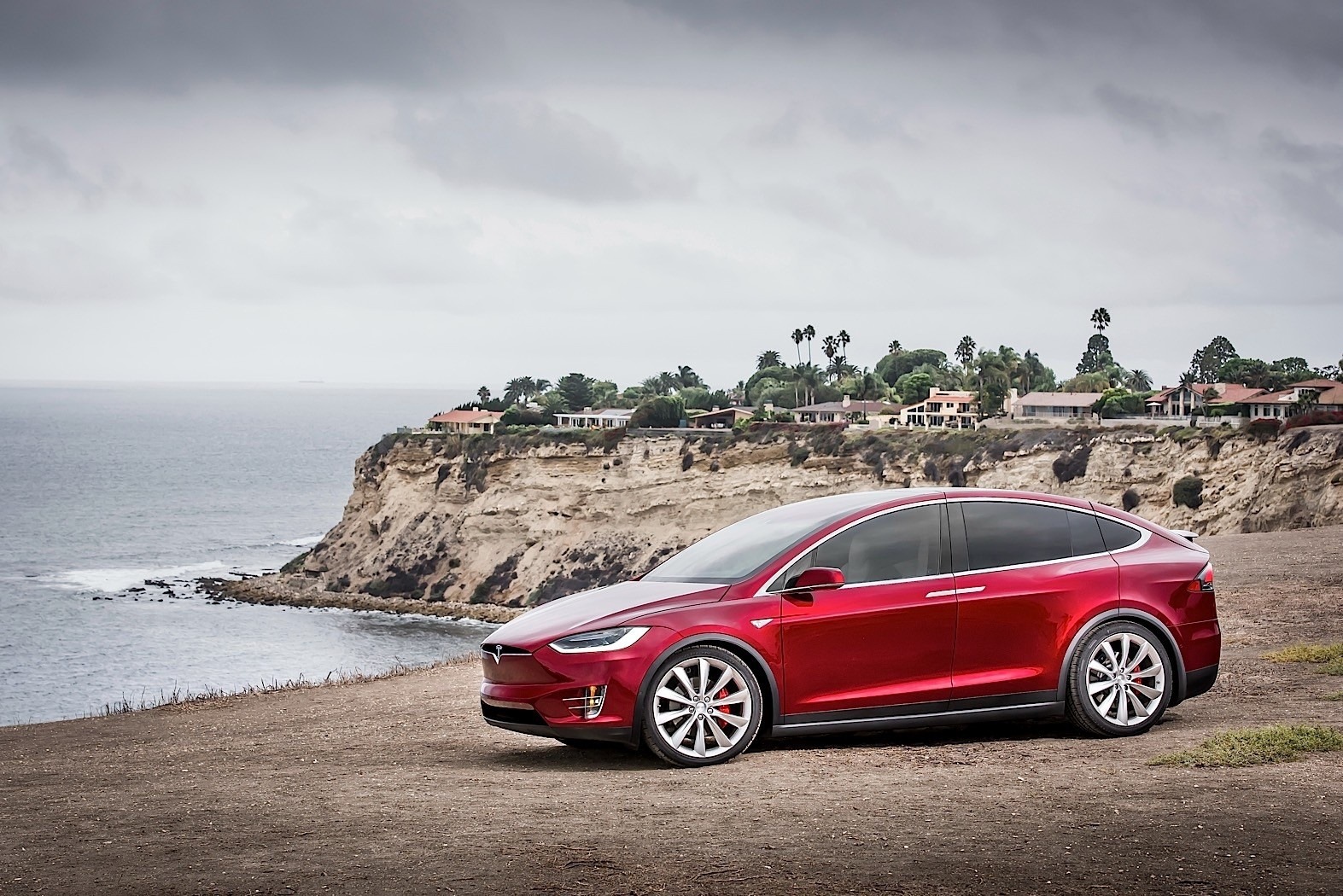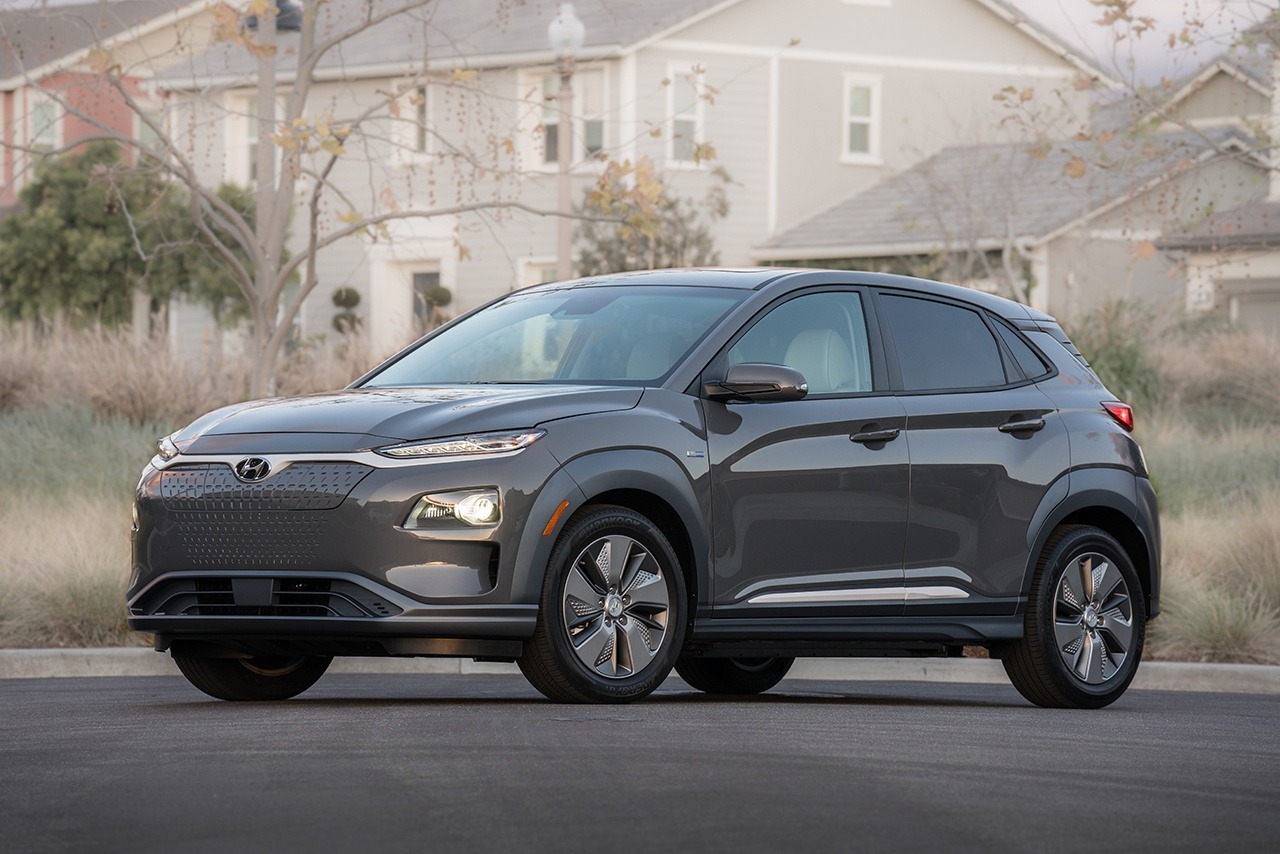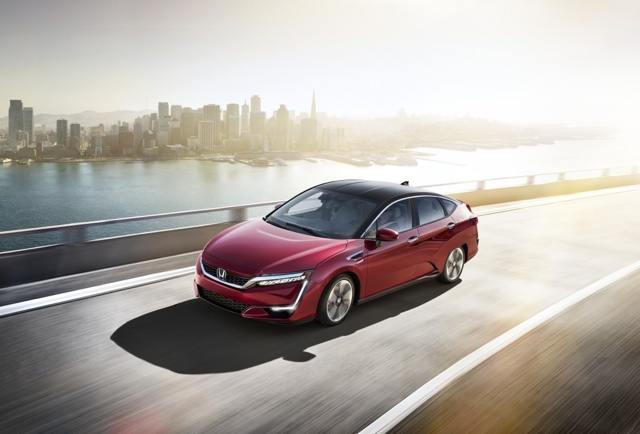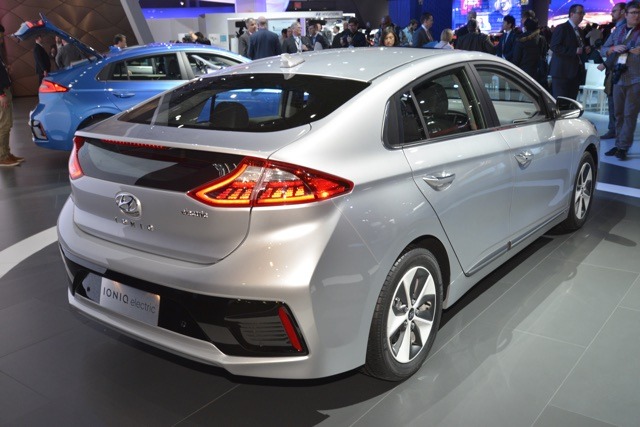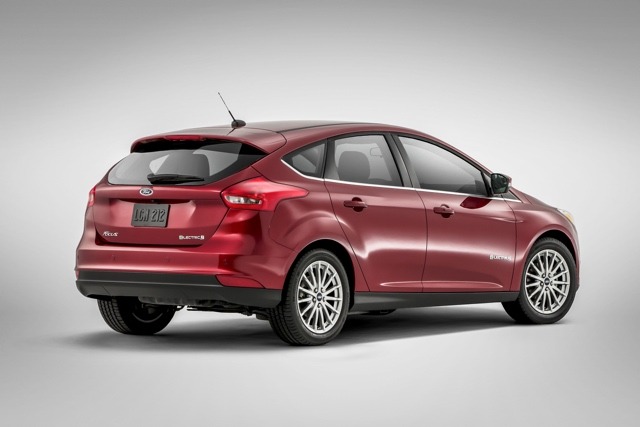Search the Community
Showing results for tags 'range'.
-
Ford revealed during a debut event for its European electrified models that the as-yet-unnamed Mustang inspired electrified crossover will have a range of 370 miles when it arrives in 2020, but those are using the WTLP cycle, and the EPA range rating could be lower. Ford has previously stated they were targeting a range of 300 miles, so a good guess for the EPA range would be somewhere between those two numbers. Ford has recently trademarked the name "Mach-E" and "Mustang Mach-E". Could this be a name for this new EV crossover? Time will tell. Earlier in 2019, Ford stated that all future vehicle will have an electrified version, something borne out by yesterdays unveiling of the 2020 Ford Escape with two hybrid variants. Ford also teased us with the Puma, a compact crossover set to slot between the Ecosport and Kuga, the Euro version of the Escape. The Puma uses a 48-volt batter and a belt-alternator-starter system mated to a 1.0 liter 3-cylinder EcoBoost engine. No word yet if the Puma will make it to the U.S., but with pint-sized crossovers selling so well in the U.S., we'd not be surprised to see it here in the near future. (Click image to enlarge)
-
- crossover
- electric vehicle
- (and 4 more)
-
Chevrolet has announced that for 2020, the Chevrolet Bolt will have a longer range between charges. The new maximum range on a full charge is now 259, a 21 mile increase over previous year cars. Chevy achieved this by making a small change in the battery cell chemistry. This allowed the team to increase range without changing the structure of the battery pack. The change increases the battery pack's capacity from 60 kWh to 66 kWh. The drivetrain itself has not changed and remains a 200 horsepower / 266 lb-ft unit. Chevy is also offering two additional colors for 2020, Cayenne Orange Metallic (additional cost option) and Oasis Blue.
-
Chevrolet has announced that for 2020, the Chevrolet Bolt will have a longer range between charges. The new maximum range on a full charge is now 259, a 21 mile increase over previous year cars. Chevy achieved this by making a small change in the battery cell chemistry. This allowed the team to increase range without changing the structure of the battery pack. The change increases the battery pack's capacity from 60 kWh to 66 kWh. The drivetrain itself has not changed and remains a 200 horsepower / 266 lb-ft unit. Chevy is also offering two additional colors for 2020, Cayenne Orange Metallic (additional cost option) and Oasis Blue. View full article
-
We reported earlier in April that Tesla was preparing more efficient versions of their Model S and Model X. Yesterday Tesla announced improvements to the Model S and Model X Long Range models that will increase range to 370 miles and 325 miles respectively, based on EPA testing cycle. The vehicles will still use the same 100 kWh battery pack. Unfortunately, customers will only get this upgrade when they purchase a new vehicle. The upgrade changes the drive hardware to the latest version of Tesla's motor technology. Now using a permanent magnet synchronous reluctance motor, silicon carbide power electronics, improved lubrication, cooling, bearings, and gear designs achieve a 10% improvement in range. This improvement works both during supplying power to the vehicle and during times of regenerative braking. In addition to adding range, power and torque has increased for all Model S and Model X versions, resulting in even better 0-60 times. Along with this new more efficient powertrain, the Model S and Model X are now capable of 200kW charging on V3 Superchargers and 145 kW on V2 Supercharger. This enables drivers to charge 50% faster. Tesla has also upgraded the air suspension system to be fully-adaptive. It will give an ultra-cushioned feel when cruising on the highway for firm up during more aggressive driving behavior. The adaptive suspension can receive over the air updates so that Tesla owners always have the latest technology. Tesla will also be bringing back their standard range versions of these cars at a lower entry price that includes the latest motor and suspension updates. Any existing Model S or Model X owners who purchase a new Performance model of these cars will get a free upgrade to Ludicrous Mode at no additional charge. The changes go into production this week and can be ordered today.
- 3 comments
-
- electric vehicle
- ev
- (and 4 more)
-
We reported earlier in April that Tesla was preparing more efficient versions of their Model S and Model X. Yesterday Tesla announced improvements to the Model S and Model X Long Range models that will increase range to 370 miles and 325 miles respectively, based on EPA testing cycle. The vehicles will still use the same 100 kWh battery pack. Unfortunately, customers will only get this upgrade when they purchase a new vehicle. The upgrade changes the drive hardware to the latest version of Tesla's motor technology. Now using a permanent magnet synchronous reluctance motor, silicon carbide power electronics, improved lubrication, cooling, bearings, and gear designs achieve a 10% improvement in range. This improvement works both during supplying power to the vehicle and during times of regenerative braking. In addition to adding range, power and torque has increased for all Model S and Model X versions, resulting in even better 0-60 times. Along with this new more efficient powertrain, the Model S and Model X are now capable of 200kW charging on V3 Superchargers and 145 kW on V2 Supercharger. This enables drivers to charge 50% faster. Tesla has also upgraded the air suspension system to be fully-adaptive. It will give an ultra-cushioned feel when cruising on the highway for firm up during more aggressive driving behavior. The adaptive suspension can receive over the air updates so that Tesla owners always have the latest technology. Tesla will also be bringing back their standard range versions of these cars at a lower entry price that includes the latest motor and suspension updates. Any existing Model S or Model X owners who purchase a new Performance model of these cars will get a free upgrade to Ludicrous Mode at no additional charge. The changes go into production this week and can be ordered today. View full article
- 3 replies
-
- 1
-

-
- electric vehicle
- ev
- (and 4 more)
-
Ford revealed during a debut event for its European electrified models that the as-yet-unnamed Mustang inspired electrified crossover will have a range of 370 miles when it arrives in 2020, but those are using the WTLP cycle, and the EPA range rating could be lower. Ford has previously stated they were targeting a range of 300 miles, so a good guess for the EPA range would be somewhere between those two numbers. Ford has recently trademarked the name "Mach-E" and "Mustang Mach-E". Could this be a name for this new EV crossover? Time will tell. Earlier in 2019, Ford stated that all future vehicle will have an electrified version, something borne out by yesterdays unveiling of the 2020 Ford Escape with two hybrid variants. Ford also teased us with the Puma, a compact crossover set to slot between the Ecosport and Kuga, the Euro version of the Escape. The Puma uses a 48-volt batter and a belt-alternator-starter system mated to a 1.0 liter 3-cylinder EcoBoost engine. No word yet if the Puma will make it to the U.S., but with pint-sized crossovers selling so well in the U.S., we'd not be surprised to see it here in the near future. (Click image to enlarge) View full article
-
- crossover
- electric vehicle
- (and 4 more)
-

Hyundai News:2019 Hyundai Kona Electric Has A 258 Mile Range
William Maley posted a topic in Hyundai
If you wanted an long-range electric vehicle that didn't have a Tesla badge, your best choice was the Chevrolet Bolt EV as it offered a range of 238 miles. But there is a new long-range EV champion/ The EPA has announced the figures for the 2019 Hyundai Kona Electric. It will have a maximum range of 258 miles, which is 20 miles more than the Chevrolet Bolt. It also soundly beats a number of other competitors, 107 miles more than a Nissan Leaf (151 mile range) 134 miles more than a Hyundai Ioniq Electric (124 mile range) 169 miles more than a Honda Clarity EV (89 mile range) Of course, the Tesla Model 3 Long Range beats the Kona Electric soundly with a range of 310 miles. But standard range Model 3 trails it by 33 miles (215 mile range). No word on pricing, but the Kona Electric will go on sale towards the end of the year. Source: EPA View full article -
If you wanted an long-range electric vehicle that didn't have a Tesla badge, your best choice was the Chevrolet Bolt EV as it offered a range of 238 miles. But there is a new long-range EV champion/ The EPA has announced the figures for the 2019 Hyundai Kona Electric. It will have a maximum range of 258 miles, which is 20 miles more than the Chevrolet Bolt. It also soundly beats a number of other competitors, 107 miles more than a Nissan Leaf (151 mile range) 134 miles more than a Hyundai Ioniq Electric (124 mile range) 169 miles more than a Honda Clarity EV (89 mile range) Of course, the Tesla Model 3 Long Range beats the Kona Electric soundly with a range of 310 miles. But standard range Model 3 trails it by 33 miles (215 mile range). No word on pricing, but the Kona Electric will go on sale towards the end of the year. Source: EPA
-
Honda will soon be entering the electric car arena with the introduction of the Clarity EV this spring. But as Automotive News has learned, the Clarity EV will have a big disadvantage right out of the gate. The Clarity EV will only offer a range of 80 miles on a single charge. This puts it well behind nearly all of the electric vehicles on sale. 2017 Nissan Leaf: 107 mile range 2017 Ford Focus Electric: 115 mile range 2017 Hyundai Ioniq Electric: 124 mile range 2017 Volkswagen e-Golf - 125 mile range 2017 Chevrolet Bolt - 238 mile range Why the limited range? Honda explained to Automotive News the decision came down two parameters that were non-negotiable: the size of the Clarity's platform - underpins a fuel cell and upcoming plug-in hybrid - and keeping the starting price around $35,000. With these two points, Honda's engineers were hamstrung from putting in a larger battery. Still, Honda is trying to put a positive spin on this, saying they believe they have found a sweet spot in the EV marketplace. "A pillar of the Honda brand is affordability, and if Honda came out with some obscenely priced long-range electric car, what does that do for the brand? Most of our customers would not be able to acquire it," Steve Center, vice president of environmental business development at American Honda Motor. "These people want a battery car and they know what they do and where they go. They're very rational and they don't need to lug around or charge up a 300-mile-range battery because that costs them electricity." But how many of those people are out there? Studies within the past year or so have shown that while most people would be able to get away with an electric vehicle providing a range of under 100 miles, the fear of range anxiety rears its ugly head. Source: Automotive News (Subscription Required) View full article
- 6 replies
-
- clarity
- electric vehicle
-
(and 3 more)
Tagged with:
-
Honda will soon be entering the electric car arena with the introduction of the Clarity EV this spring. But as Automotive News has learned, the Clarity EV will have a big disadvantage right out of the gate. The Clarity EV will only offer a range of 80 miles on a single charge. This puts it well behind nearly all of the electric vehicles on sale. 2017 Nissan Leaf: 107 mile range 2017 Ford Focus Electric: 115 mile range 2017 Hyundai Ioniq Electric: 124 mile range 2017 Volkswagen e-Golf - 125 mile range 2017 Chevrolet Bolt - 238 mile range Why the limited range? Honda explained to Automotive News the decision came down two parameters that were non-negotiable: the size of the Clarity's platform - underpins a fuel cell and upcoming plug-in hybrid - and keeping the starting price around $35,000. With these two points, Honda's engineers were hamstrung from putting in a larger battery. Still, Honda is trying to put a positive spin on this, saying they believe they have found a sweet spot in the EV marketplace. "A pillar of the Honda brand is affordability, and if Honda came out with some obscenely priced long-range electric car, what does that do for the brand? Most of our customers would not be able to acquire it," Steve Center, vice president of environmental business development at American Honda Motor. "These people want a battery car and they know what they do and where they go. They're very rational and they don't need to lug around or charge up a 300-mile-range battery because that costs them electricity." But how many of those people are out there? Studies within the past year or so have shown that while most people would be able to get away with an electric vehicle providing a range of under 100 miles, the fear of range anxiety rears its ugly head. Source: Automotive News (Subscription Required)
- 6 comments
-
- clarity
- electric vehicle
-
(and 3 more)
Tagged with:
-
Late this year will see the launch of two new EVs, the Chevrolet Bolt and Hyundai Ioniq EV. The Bolt is the big story as it will offer a 200 mile range. The Ioniq EV will only have an 110 mile range. But that doesn't mean Hyundai isn't thinking about doing an electric vehicle with more range. Byung K. Ahn, director of Hyundai’s Eco-Vehicle Performance Development group says the Korean automaker is planning to launch a 200 mile EV in 2018, and then a 250 mile EV two years later. It would be easy to think that Hyundai will just improve the Ioniq EV to reach these ranges, but Ahn said it wouldn't the Ioniq. For a vehicle to have a range of 200 miles or more, it requires a vehicle with a larger footprint. Despite the improvements in improvements in overall energy density and software mapping, sometimes the best solution is to throw more batteries at it. Keep this in mind, the Chevrolet Bolt's wheelbase 3.9 inches shorter than the Ioniq (102.4 vs. 106.3 inches), while being able to provide a range of 200 miles. We're wondering if the design of the Ioniq's platform to allow three different powertrains - hybrid, plug-in hybrid, and electric - effects the overall packaging to fit more batteries. Ahn said Hyundai is “looking at different possibilities” for their long-range EVs. This means it could be based on a current or new model. Source: Car and Driver Pic Credit: Newspress USA
- 4 comments
-
- 250 Mile Range
- 250 Miles
-
(and 4 more)
Tagged with:
-
Late this year will see the launch of two new EVs, the Chevrolet Bolt and Hyundai Ioniq EV. The Bolt is the big story as it will offer a 200 mile range. The Ioniq EV will only have an 110 mile range. But that doesn't mean Hyundai isn't thinking about doing an electric vehicle with more range. Byung K. Ahn, director of Hyundai’s Eco-Vehicle Performance Development group says the Korean automaker is planning to launch a 200 mile EV in 2018, and then a 250 mile EV two years later. It would be easy to think that Hyundai will just improve the Ioniq EV to reach these ranges, but Ahn said it wouldn't the Ioniq. For a vehicle to have a range of 200 miles or more, it requires a vehicle with a larger footprint. Despite the improvements in improvements in overall energy density and software mapping, sometimes the best solution is to throw more batteries at it. Keep this in mind, the Chevrolet Bolt's wheelbase 3.9 inches shorter than the Ioniq (102.4 vs. 106.3 inches), while being able to provide a range of 200 miles. We're wondering if the design of the Ioniq's platform to allow three different powertrains - hybrid, plug-in hybrid, and electric - effects the overall packaging to fit more batteries. Ahn said Hyundai is “looking at different possibilities” for their long-range EVs. This means it could be based on a current or new model. Source: Car and Driver Pic Credit: Newspress USA View full article
- 4 replies
-
- 250 Mile Range
- 250 Miles
-
(and 4 more)
Tagged with:
-
One of the key problems with most electric vehicles is the limited range on offer with many offering a max range of around 100 to 120 miles. Many believe that for electric vehicles to be in the mainstream, they need to offer a minimum of 200 Miles. But not Ford. Speaking with Automotive News, Ford's director of electrification programs and engineering Kevin Layden says the updated 2017 Focus EV with a range of 100 miles will cover the average commute for a driver. "I think right now with the launch of the Focus Electric at 100 miles, it is going to satisfy a big chunk of the population. It's going to be really affordable and a step up from where we are now," said Layden. The primary issue is the cost and weight of the batteries to achieve a 200 mile range. Ford doesn't see how an increase of possibly $6,000 and added weight would help. Layden says the lower range allows the blue oval to use a lighter and less expensive battery pack. But there is another factor possibly in play as to why Ford isn't going with a 200 mile range with the Focus EV, sales. The Focus EV is very slow seller for the brand, with only 1,717 models sold in 2015. Through March, Ford only has moved 257 Focus EVs (average of about 86 vehicles per month). Source: Automotive News (Subscription Required)
-
- Battery
- Electric Vehicles
-
(and 3 more)
Tagged with:
-
One of the key problems with most electric vehicles is the limited range on offer with many offering a max range of around 100 to 120 miles. Many believe that for electric vehicles to be in the mainstream, they need to offer a minimum of 200 Miles. But not Ford. Speaking with Automotive News, Ford's director of electrification programs and engineering Kevin Layden says the updated 2017 Focus EV with a range of 100 miles will cover the average commute for a driver. "I think right now with the launch of the Focus Electric at 100 miles, it is going to satisfy a big chunk of the population. It's going to be really affordable and a step up from where we are now," said Layden. The primary issue is the cost and weight of the batteries to achieve a 200 mile range. Ford doesn't see how an increase of possibly $6,000 and added weight would help. Layden says the lower range allows the blue oval to use a lighter and less expensive battery pack. But there is another factor possibly in play as to why Ford isn't going with a 200 mile range with the Focus EV, sales. The Focus EV is very slow seller for the brand, with only 1,717 models sold in 2015. Through March, Ford only has moved 257 Focus EVs (average of about 86 vehicles per month). Source: Automotive News (Subscription Required) View full article
-
- Battery
- Electric Vehicles
-
(and 3 more)
Tagged with:


